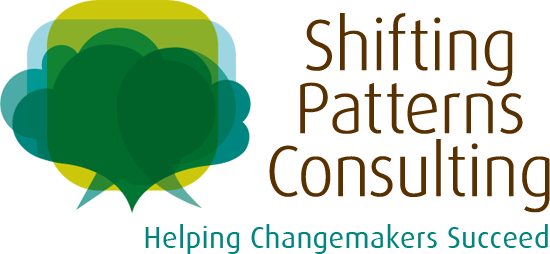Imagine being invited to go on a hike. You arrive at the trailhead and are greeted by a guide. Before the hike begins, the guide goes over the route and makes sure that participants are aware of the destination, how they will get there, and approximately how long it will take. During the hike you do your best to stay with the group; however, there are times when it’s difficult to keep up. When you arrive at a fork in the trail, you see an arrow in white powder indicating the direction to take and are relieved to know which way to go. At the end of the hike, the group assembles at the destination to marvel at the wonderful view and celebrate the great time everyone had.
Like the hike leader, the facilitator is responsible for guiding the meeting to ensure that it starts and ends on time, it goes smoothly, and the purpose is accomplished. Similar to getting ready for a hike, preparing for your meeting should include developing an agenda that explains the purpose and what needs to happen to accomplish it. The agenda, like the hiking trail, should be shared with attendees in advance so that they have time to review it, get answers to questions they may have, and are prepared to participate.
Below is an approach I’ve found helpful for facilitating meetings with social impact groups, along with a real life example, and involves answering these three questions:
1. What are we going to do? Just as the hike leader greets participants at the trailhead to prepare them for journey they will be going on, begin the meeting with some brief remarks. In addition to welcoming participants, orient them to the purpose of the meeting and explain how it will be achieved. Review the agenda and check for agreement, which includes providing an opportunity for participants to ask questions or propose changes, like adding new topics.
Provide context when introducing discussion topics. It’s easy to take for granted that everyone has the same understanding, so help everyone follow along by explaining what the topic is, how it relates to the purpose of the meeting, and how the discussion will take place, including instructions for what participants will be doing. As part of introducing the topic, consider what to focus participants’ attention on. Some questions to consider are: What does the group want to get out of the discussion? What are the boundaries for what is and isn’t part of the discussion? What do participants need to know to make an informed decision?
Example: Thanks for attending this meeting to debrief the convening we hosted to explore opportunities for collaboration with our partners. In addition to discussing everyone’s feedback, we’ll brainstorm ideas for sustaining the momentum generated during this convening. We’ll start by reviewing feedback from the convening attendees. I’ll share the data collected before opening it up for your questions and comments. Next, we’ll discuss your reflections. After that, we’ll identify lessons learned and opportunities to build on the work that has been done. Are there any questions before we begin?
2. What did we do? When it’s time to move on to the next topic, wrap up the current discussion by briefly summarizing what happened, such as highlighting key points raised, decisions made, and action items. Check for a shared understanding about what was discussed, including consensus on decisions made. Celebrating an accomplishment can also be part of the wrap-up. Depending on the amount of time available this could involve a round of applause, or participants could take turns sharing appreciation for each other’s contributions to the achievement. Wrapping up the current discussion before moving on to the next topic helps the group stay organized and enables participants to follow the flow of the meeting.
Example: As a quick summary, we discussed convening attendees’ feedback. In general, they appreciated having the opportunity to meet each other in person and share about their work. A concern that frequently came up was not having enough time to discuss challenges and opportunities they faced. Attendees also expressed interest in mobilizing their communities to advocate for policy change. We agreed to share a summary of this feedback with everyone who attended and incorporate it into the agenda for the next convening. Does that adequately capture what we discussed? Is there anything else that should also be included?
3. What are we going to do next? Make it easier for the group to follow along with what is happening by providing a transition from the previous to the next topic. Transitions are a way to signal to participants that the group is moving on to the next part of the meeting. This helps participants connect the dots between what has happened and what they will be doing next. It also orients participants to where the group is on the agenda.
Example: Now that we’re reviewed convening attendees’ feedback, let’s turn to how the convening went from your perspective. This is an opportunity for you to provide reflections that have emerged since the feedback you provided immediately after the convening or insights you may have.
Using this approach to facilitating meetings takes some planning and effort; however, it saves time in the end by minimizing confusion and misunderstandings that can derail progress. It also makes for more engaging and productive meetings.
This article was originally published by SEE Change Magazine on September 21, 2024.



















